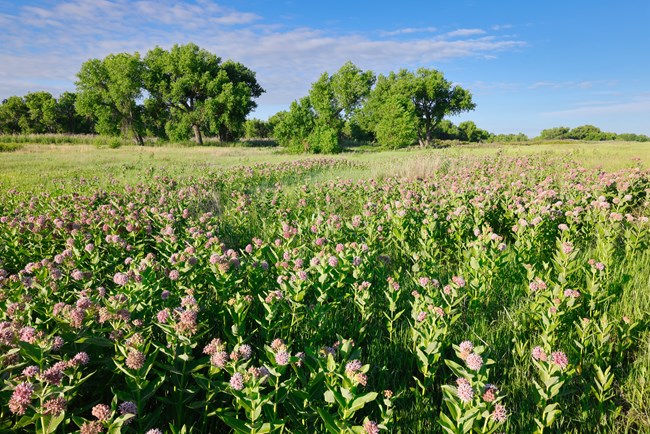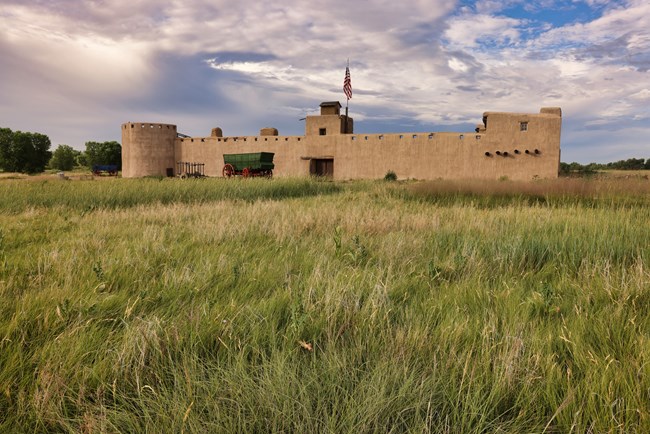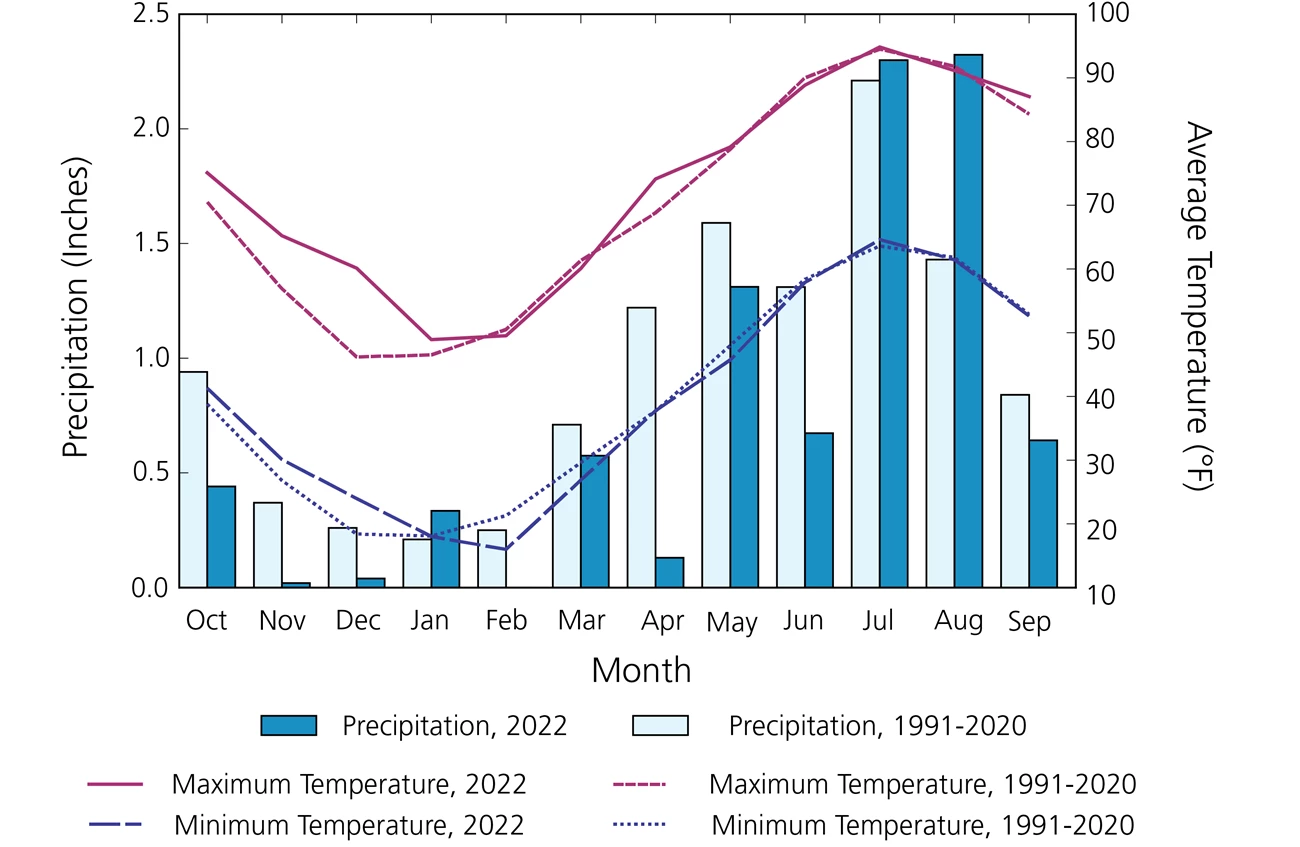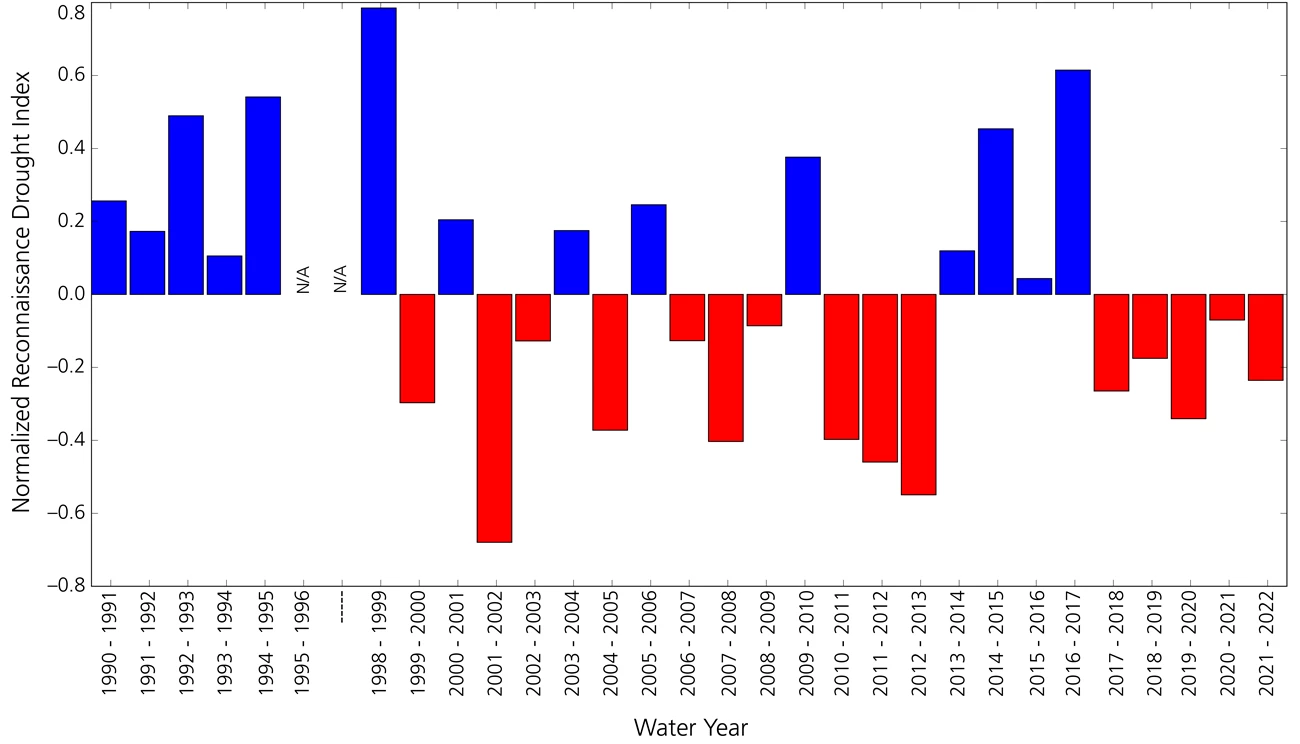Last updated: March 19, 2025
Article
Climate and Weather Monitoring at Bent’s Old Fort National Historic Site: Water Year 2022

NPS/STUART WEST
Overview
Together, climate and hydrology shape ecosystems and the services they provide, particularly in arid and semi-arid ecosystems and across the Southern Plains (Woodhouse and Overpeck 1998). Understanding changes in climate, groundwater, and surface water is key to assessing the condition of park natural resources—and often, cultural resources.
At Bent’s Old Fort National Historic Site (Figure 1), Southern Plains Inventory and Monitoring Network scientists study how ecosystems may be changing by taking measurements of key resources, or “vital signs,” year after year—much as a doctor keeps track of a patient’s vital signs. This long-term ecological monitoring provides early warning of potential problems, allowing managers to mitigate them before they become worse. We monitor climate, among other vital signs at the park.
Climate and weather reporting is by water year (WY), which begins in October of the previous calendar year and goes through September of the water year (e.g., WY2022 runs from October 2021 through September 2022). This article reports the results of climate monitoring at Bent’s Old Fort National Historic Site in WY2022.
Reference: Woodhouse, C. A., and J. T. Overpeck. 1998. 2000 years of drought variability in the central United States. Bulletin of the American Meteorological Society 79(12): 2693–2714. https://doi.org/10.1175/1520-0477(1998)079%3C2693:YODVIT%3E2.0.CO;2.

NPS

NPS/STUART WEST
Climate and Weather
There is often confusion over the terms “weather” and “climate.” In short, weather describes instantaneous meteorological conditions (e.g., it’s currently raining or snowing, it’s a hot or frigid day). Climate reflects patterns of weather at a given place over longer periods of time (seasons to years). Climate is the primary driver of ecological processes on earth. Climate and weather information provide context for understanding the status or condition of other park resources.
Methods
A National Oceanic and Atmospheric Administration (NOAA) Cooperative Observer Program (COOP) weather station, La Junta Colorado Municipal Airport (ID#54720) is located 4.2 miles (6.7 km) west of Bent’s Old Fort National Historic Site has been operational since 1945 (see Figure 1). This station provides a reliable, long-term climate dataset used for analyses in this climate report. Data from this station are accessible through Climate Analyzer.
Results for Water Year 2022
Precipitation
Annual precipitation at the La Junta Colorado Municipal Airport near Bent’s Old Fort National Historic Site in WY2022 was 8.79″ (22.3 cm; Figure 2), which was 2.55″ (6.5 cm) less than the annual average (1991–2020). Monthly precipitation in WY2022 was less than the 30-year averages in all months except January, July, and August. Extreme daily rainfall events (≥ 1″; 2.54 cm) occurred on 1 day—16 August 2022 (1.44″; 3.7 cm). This was less than the 30-year average annual frequency of 1.8 days.
Air Temperature
The mean annual maximum temperature at La Junta Colorado Municipal Airport in WY2022 was 73.0°F (22.8°C), 3.0°F (1.6°C) above the 30-year average (1991–2020). The mean annual minimum temperature in WY2022 was 39.8°F (4.3°C), 0.2°F (0.1°C) above the 30-year average. In the fall and winter of WY2022, mean monthly temperatures deviated widely from the 30-year monthly averages. The largest deviation was in December when mean monthly maximum and minimum temperatures were 13.9°F (7.7°C) and 5.6°F (3.1°C) warmer, respectively. Temperatures were closer to the 30-year average in the spring and summer of WY2022 (Figure 2). Extremely hot temperatures (≥ 99°F; 37.2°C) occurred on 21 days in WY2022, slightly less than the 30-year average frequency of 23.2 days. Extremely cold temperatures (≤ 11°F; -11.7°C) occurred on 20 days, slightly more than the average frequency of 17.9 days.

NPS
Drought
Reconnaissance drought index (Tsakiris and Vangelis 2005) provides a measure of drought severity and extent relative to the long-term climate. It is based on the ratio of average precipitation to average potential evapotranspiration (the amount of water loss that would occur from evaporation and plant transpiration if the water supply was unlimited) over short periods of time (seasons to years). The reconnaissance drought index for Bent’s Old Fort NHS indicates that WY2022 was drier than the WY1991–WY2022 average for the fifth consecutive year from the perspective of both precipitation and potential evapotranspiration (Figure 3).
Reference: Tsakiris G., and H. Vangelis. 2005. Establishing a drought index incorporating evapotranspiration. European Water 9: 3–11.

NPS
Report Citation
Authors: Kara Raymond, Andy Ray
Raymond, K., and A. Ray. 2023. Climate and Weather Monitoring at Bent's Old Fort National Historic Site: Water Year 2022. Southern Plains Network, National Park Service, Pecos, New Mexico.
